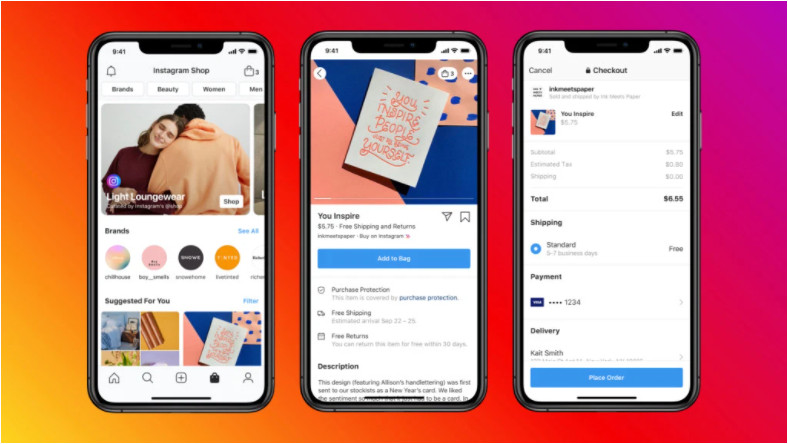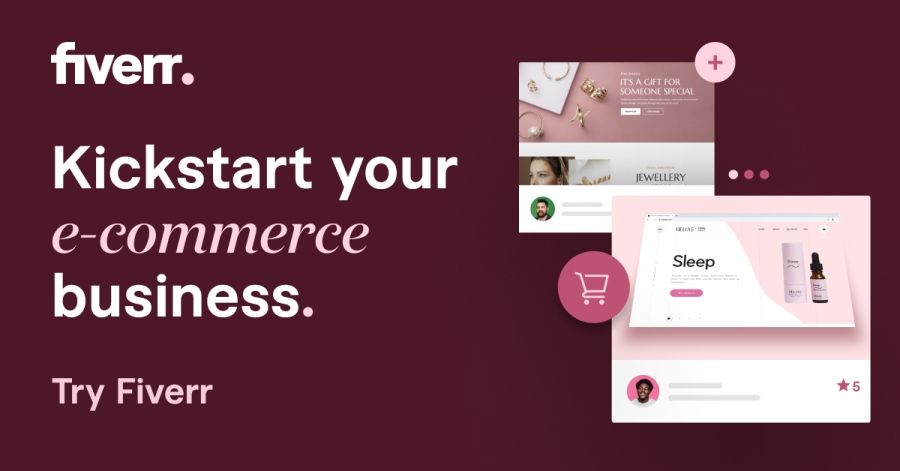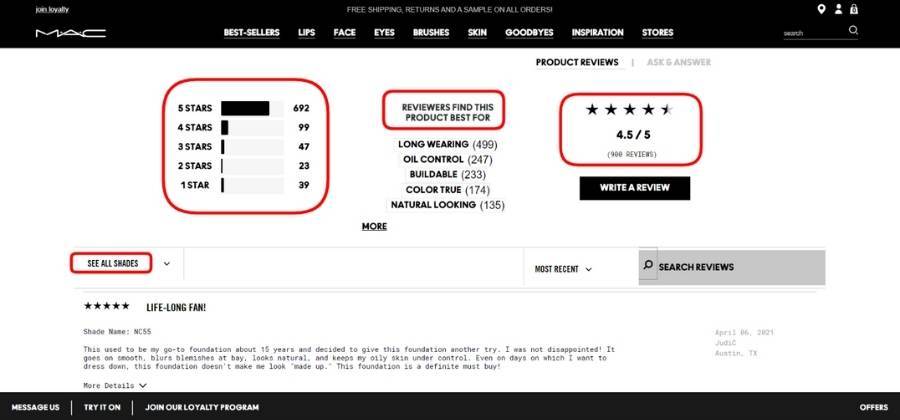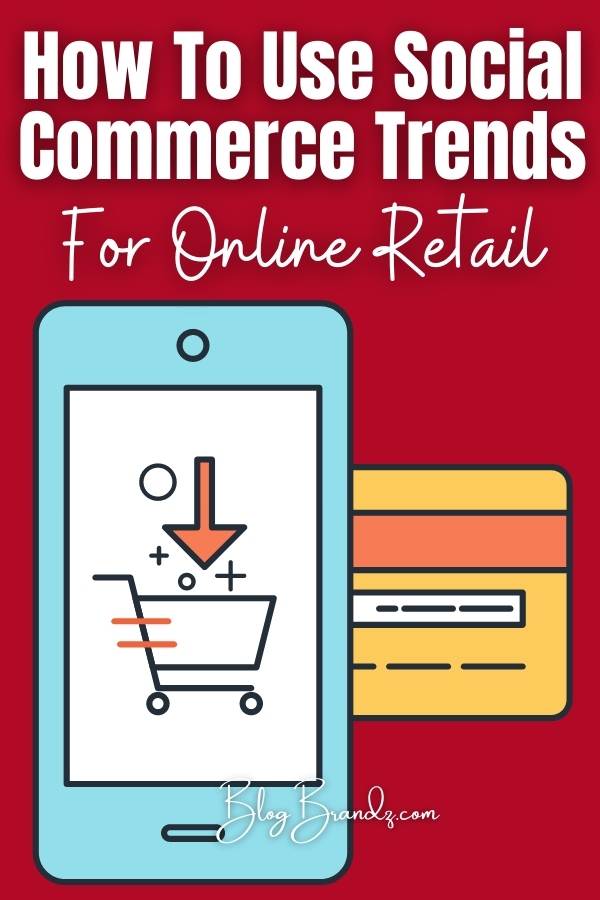Social commerce growth is a major trend in online retail. Learn how to use social commerce platforms for eCommerce and how to boost online store conversions.
Social media and eCommerce are a match made in Heaven. So, is social commerce growth the next major trend in online retail? Yes, especially if you consider current social commerce trends.
In 2020, the global social commerce market was estimated at approximately $89,5 billion, and, by 2027, it is likely to exceed the point of $604.5 billion.
Of course, these numbers solely represent direct sales from social media eCommerce on platforms such as Instagram and Facebook.
But as this article on social commerce trends 2021 notes, social shopping helps brands create frictionless shopping experiences directly within social channels, reach consumers in the places that matter, and take advantage of the eCommerce boom during the pandemic.
Contents
What Is Social Commerce?
The notion of social commerce itself might be much wider and include all online interactions between brands and customers that ultimately have a favorable effect on social shopping.
User-generated content, reviews, and solid links with the audience on social networks are an integral part of a strong marketing strategy for every online retailer.
In this article, we’ll discuss social commerce in all aspects of this term. Then we’ll consider the effectiveness of social media shops and important details about their implementation and functionality.
After that, we’ll see what kinds of social proof can significantly contribute both to a brand’s image and sales on these social shopping platforms.
Finally, we’ll discuss website performance and usability on devices that substantially impact the success of your online business and must not be neglected.
In a narrow sense, social commerce refers to sales that take place on social networks, as in the case of Instagram commerce. Most of the time, the purchasing process starts from your account, and then buyers are redirected to the website.
For instance, you may see a shoppable tag on the photo on Instagram, tap on it, see the item with a price and additional information, and, finally, press the “Visit website” button where you can place the order.
However, in the USA, some businesses already have Facebook commerce account approval with the ability to support transactions inside FB and Instagram using Meta Pay.
Buyers see a “Proceed to Checkout” button, meaning they can place the order and pay for it without leaving the social media platform.
It’s obvious that with in-app payments becoming more accessible, the share of social commerce will only increase. People always opt for the most convenient and lazy ways, especially now when we’re overwhelmed with numerous sources, options, and amounts of information.
It’s the perfect state of affairs for social sellers when buyers are allowed to instantly purchase an item that has just appeared on their feed and then continue to watch Stories and comment on posts.
In the broad sense, however, social commerce is considered an important part of eCommerce and refers to every type of online interaction between companies and audiences that facilitates social shopping.
In other words, current customers, by sharing their feedback and content around a product, contribute to the transaction by transforming potential clients into buyers.
There are several ways brands can leverage social commerce. The most effective social commerce examples are:
- Sharing user-generated content on social commerce platforms and official accounts on social media.
- Creating review sections on product pages so that people can rate items and leave comments about their purchases.
Some experts term the first social commerce example as Offsite social commerce, and the second as Onsite social commerce. In this article, we’ll explore all these sub-types of social commerce.
User-generated content is a win-win situation for all participants in social media commerce transactions because genuine buyer reviews sell.
- Brands save on advertising
For a brand, these pieces of content that users create voluntarily and honestly are simultaneously the cheapest and the most credible type of advertisement with a proven effect on sales.
- Genuine buyer reviews sell
For a prospect, such content is a strong sign of the reliability of a company. Few things can be as persuasive to leads as detailed reviews and non-retouched photos by other shoppers. They often consider this feedback as advice.
- Helps create brand advocacy
For regular customers, the opportunity to share their impressions and opinions on the product is a huge asset in building a high-trust relationship with a brand. If their photos or videos appear on the brand’s website and social media, it can help to nurture genuine brand advocates.
Offsite Social Commerce: Social Media Shops
Social media platforms are taking more interest in adding social shopping options on their websites and apps.
For instance, TikTok’s social commerce initiative includes adding shoppable video streams and it recently launched one in collaboration with Walmart.
It was the first time that American users were encouraged to purchase Walmart’s apparel right from the video in the app. However, this social commerce example still seems more like an experiment than an established practice.
As of now, there are three main payers in the social commerce industry – Facebook, Instagram, and Pinterest. Let’s discuss these offsite Social Commerce platforms in more detail.
#1. Facebook Shops
In terms of social commerce, Facebook is way ahead of other platforms. More brands are starting to leverage their Facebook Business Pages by setting up Shops.
As Facebook promises, it just takes a few minutes and you can either create a tailored catalog for your store or just import one from your regular online shop.
Then you choose specific design elements and fonts to your liking. The promotion possibilities are rather extensive too.
This is an extremely handy social shopping option for customers because it supports in-app purchases. In addition, buyers can communicate with merchants directly and instantly via Facebook Messenger.
If you’re not sure whether you need a Facebook shop for your brand, you can launch a test shop to explore this social shopping network thoroughly in terms of customer experience and efficiency.
However, we highly recommend having a Facebook shop for two reasons:
- It is one more means of shopping that can be perfect for a specific segment of your audience.
- Without a Facebook Shop, you cannot launch an Instagram shop.
Facebook is also working with partners like Shopify and WooCommerce to give small businesses the support they need.
#2. Instagram Shops
In terms of social commerce, Instagram claims that, in 2017 alone, 70% of shoppers preferred finding new products via its social commerce platform. The percentage is likely higher today.
It would be fair to say that this social commerce platform is incrementally transforming into a huge marketplace with loads of ads, offers, and options for convenient social shopping.
On Instagram, Product tags allow users to check the price of a liked item and then visit the page of this product to learn more about it.
Moreover, they can see “Featured With” pieces and similar goods that could attract attention. Customers can buy products either on the website or inside the app itself.
The new messaging button on Instagram Shops makes it easy for people to message businesses through Messenger, WhatsApp, or Instagram Direct.
This is a high-speed and convenient way of purchasing that makes the most of the impulse buy. Brands can add these shoppable tags to posts, Reels, Stories, IGTV videos, Guides, and Live broadcasts.
One more argument in favor of Instagram shops is that it received 130 million clicks per month on shoppable tags in 2019.
As mentioned before, Instagram and Facebook shops are interconnected, and Instagram uses data from Facebook, so a Facebook Shop setup is always the first step to starting your social commerce business.
With the launch of Instagram Checkout, Facebook’s share of social commerce among social commerce companies will definitely soar.
Nobody knows when this feature will be rolled out to other businesses all over the globe. Nevertheless, there are third-party tools that allow users to complete the purchase offsite.
#3. Pinterest Shops
For a while now, Pinterest, which calls itself a visual discovery engine, has offered shoppable Product Rich Pins that allow brands to display the most up-to-date pricing, availability, and product information right on the Pin. You can add buyable Product Pins to your website and lead buyers on Pinterest to your site where they can purchase your products.
Pinterest’s Verified Merchant Program helps shoppers discover and buy from vetted brands. It’s free to join and makes your brand stand out. Verified merchants get a special badge on their profile, and are also eligible for increased distribution in dedicated shopping experiences.
Pinterest Catalogs is a feed ingestion tool designed for businesses that sell products on their websites.
When you connect your catalog to Pinterest, you’ll get a special Shop Tab on your profile. This puts all of your shoppable products in one, easy-to-find place.
If you have a Pinterest business profile and you’ve created shopping Pins with Catalogs, you can use these Pinterest social commerce tools to feature your shoppable products on your profile.
Many eCommerce brands actively use Pinterest due to the remarkable statistics that claim 459 million people a month visited Pinterest in 2021 to find ideas for their next purchases.
Pinterest currently supports Shopify and other eCommerce integrations.
Onsite Social Commerce: UGC & Social Proof
Under the label of onsite social commerce, we can include every single social commerce example that is connected with the notion of social and eCommerce.
Further, we’ll consider a couple of primary onsite Social Commerce examples that have a significant impact on online retail – UGC (User-Generated Content) and social proof.
These forms of content can be located both on the official online store and on the social media accounts of a company.
#1. User-Generated Content (UGC)
Today, most companies, from small local businesses to transnational corporations share photos and videos of their clients and customers on social platforms as social proof that they are popular and reliable brands.
The first way to use UGC is to embed social media feeds/widgets right into product pages. For users, this is a clear sign of an item’s popularity.
Take a look at screenshots from the ASOS Instagram account. Its feed is almost entirely built from customer photos.
Moreover, this is often effective in convincing potential buyers to take action and make the purchase because:
- Buyers can see how the item looks on real people
- Buyers often believe that reviewers only share reviews because they’re satisfied with a product
- This increases their willingness to buy a product they see online
In the screenshot below, you can see how Reebok leverages UGC.
Most brands would repost users’ posts and Stories as a free source of new content and buyers are inspired to share their own reviews and product images when they see other reviewers doing that and being reshared by their favorite brand.
Many brands collaborate with influencers but unsolicited reviews from buyers you didn’t pay are even more precious.
#2. Social Proof
Every large brand offers its customers the opportunity to write reviews and rate products. They also encourage customers to share their suggestions because true feedback has a marvelous effect on prospective buyers.
In the screenshot above from the official MAC website, you’ll notice how mindful the brand is towards its customers and how they’ve done its best to organize the review section.
You can see the number of reviews, ratings, and core features of the product mentioned by customers. You can even choose a shade of the product to read the most relevant comments.
That means MAC has designed the form that people fill in when leaving reviews to make them very informative and easy to navigate.
Boosting Online Store Performance & Conversions
The better the functionality, content, and social proof you add to your online store, the better will be your sales and conversions.
Every shop has hundreds and thousands of product pages filled with content, and this can often slow down page loading leading to a drop in conversions.
If you run your own online store or social commerce website, it’s important to apply conversion rate optimization principles to improve the performance of your website and its metrics.
Also, you must wisely organize all design and navigation elements so that visitors are comfortable with both the desktop and mobile versions.
The most popular way to improve your online store conversions in terms of both speed and UX/UI is to rebuild it as a PWA (a progressive web app). This type of app blends best practices in creating mobile apps and websites.
It also gives a native app-like impression for those browsing it on any device (especially mobile). Here are some advantages of a PWA:
- The incredible speed of use
- Can be accessed through a shortcut on the home screen and a regular link in a browser
- Doesn’t use up device memory because you don’t actually install it
- Responsive design works regardless of the device
- Can work in an offline mode due to smart caching approaches
There are several combinations for developing a PWA. For instance, for the backend, you can find Java, .NET, or Node.js developers for hire. For the front end, you may consider specialists who work with JavaScript frameworks.
Creating the “Know, Like, and Trust” factor among customers is essential for every business that wants to thrive.
That’s why brands expand their online presence, provide consumers with new, simple, and fast ways to buy, and welcome all kinds of feedback from shoppers.
Social commerce is without a doubt a solid and lucrative trend in online retail, so it’s worth investing time and money in your social commerce strategy.
Ecommerce Tips & Tutorials
- Free Ecommerce Guides & Online Ecommerce Courses
- Free Shopify Courses, Shopify Classes & Shopify Training
- Conscious Shopping Portals And The Growth Of Conscious Commerce
- 15 eCommerce SEO Best Practices To Skyrocket Your Online Sales
- How To Make Your Own App And Earn Money
© 2021 – 2024, Kate Parish. All rights reserved.
Kate Parish is Chief Marketing Officer at Onilab with 8+ years of experience in Digital Marketing and website promotion. She strives to stay updated with the ever-advancing online world, and the sphere of PWA solutions for Magento online shops. Her expertise includes in-depth knowledge of SEO, branding, PPC, SMM, and online sales.
Discover more from Business & Branding Tips
Subscribe to get the latest posts sent to your email.








